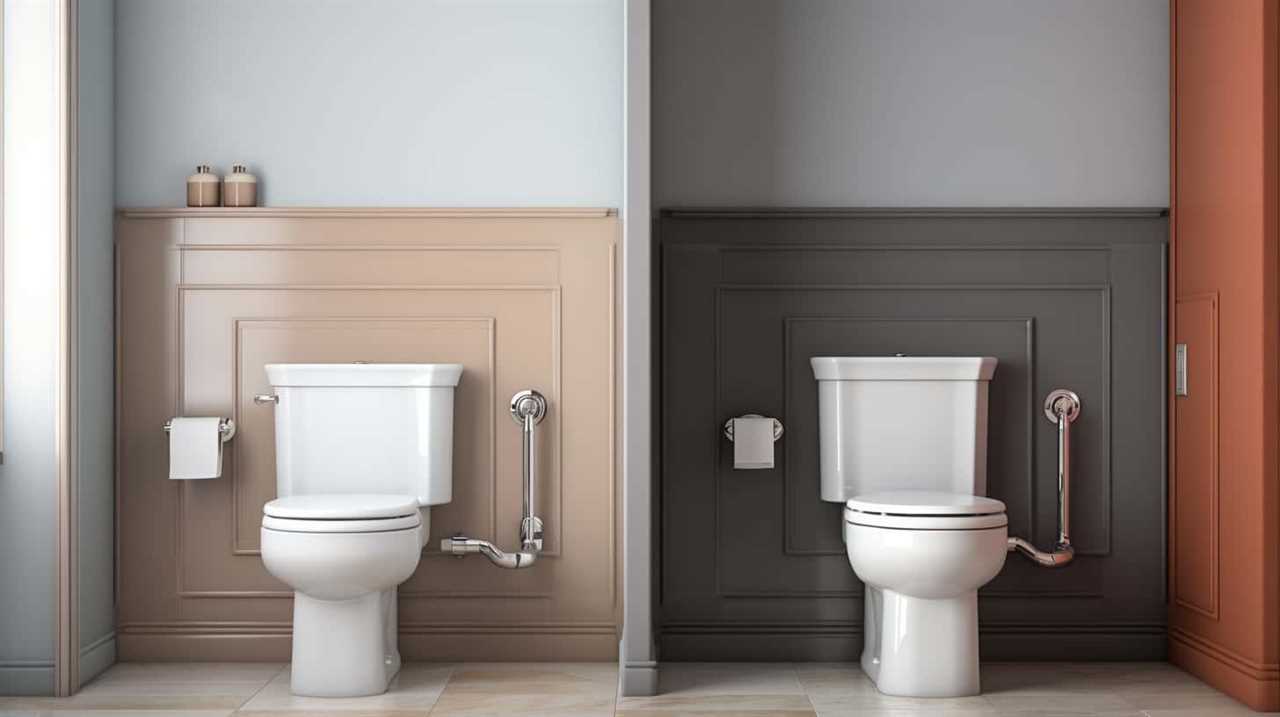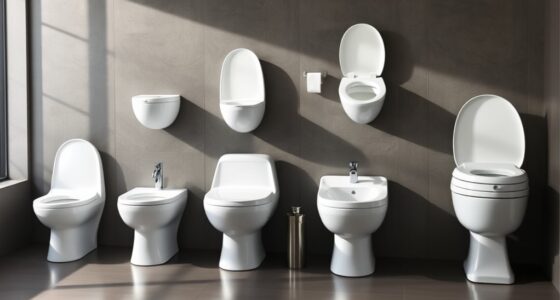We have all wondered at some point: can we simply pour water in the toilet bowl to flush?
In this article, we will explore the mechanics of toilet flushing and the role water plays in this process.
We will also delve into alternative methods and factors to consider before resorting to pouring water.
With these tips and precautions, you will gain a deeper understanding of whether pouring water is a viable option for flushing your toilet.

Key Takeaways
- Understanding the mechanics of toilet flushing ensures proper flushing and cleanliness.
- Water volume and quality are crucial for efficient flushing, and low-flow and dual-flush toilets can help conserve water.
- Pouring water using a bucket can be a sustainable solution when the flushing mechanism isn’t working or during water shortages.
- It is important to consider regular toilet bowl maintenance, avoid excessive water pouring, and be mindful of water usage and its impact.
The Mechanics of Toilet Flushing
To understand the mechanics of toilet flushing, we need to know how it works when we press the flush lever.
The process begins with the design of the toilet bowl itself. The shape and size of the bowl play a crucial role in facilitating the flow of water and waste.
When the flush lever is pressed, it activates a mechanism that releases water from the tank into the bowl. The water pressure created by this release creates a force that propels the waste through the trapway and into the sewage system.
The effectiveness of the flush depends on the design of the bowl and the strength of the water pressure. Understanding these factors is essential in ensuring proper flushing and a clean toilet.
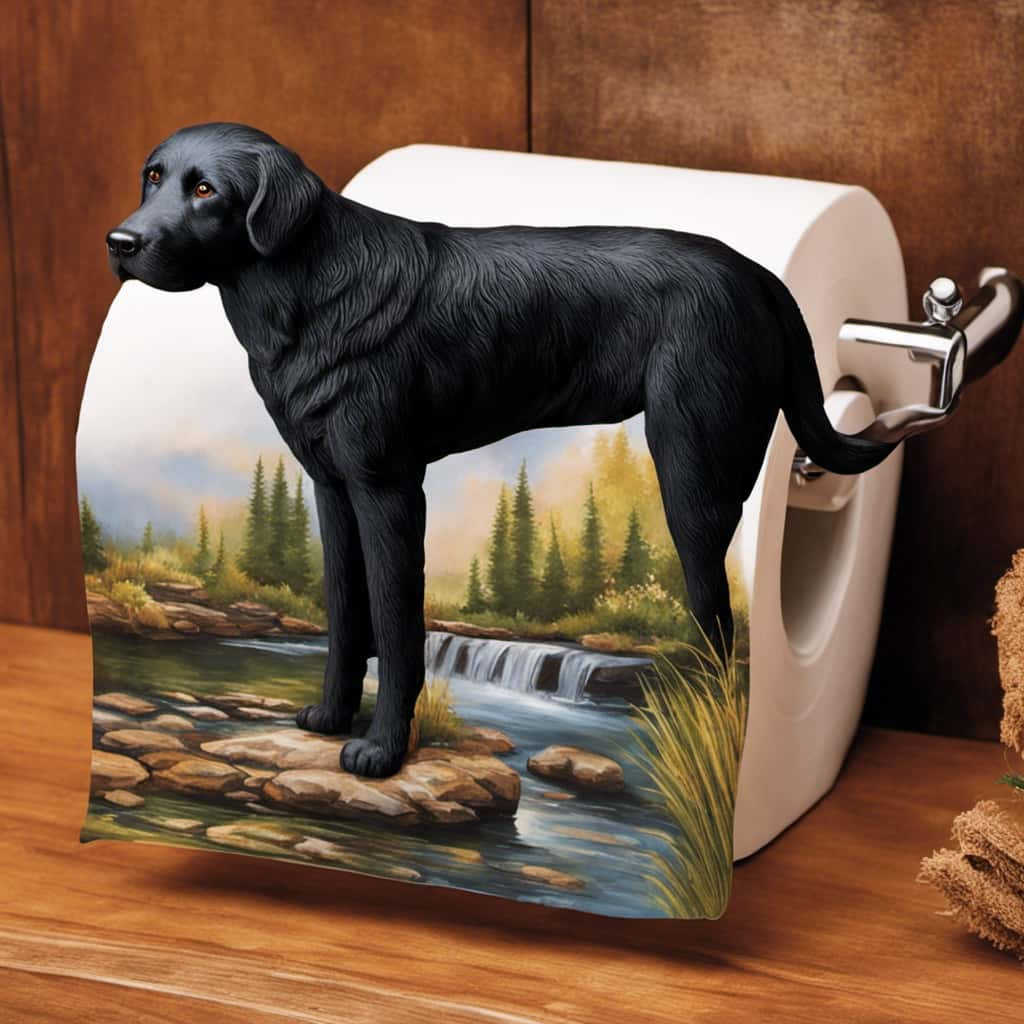
Now, let’s delve into the role of water in toilet flushing.
The Role of Water in Toilet Flushing
When we press the flush lever, water is released from the tank into the toilet bowl, initiating the flushing process. Water plays a crucial role in toilet flushing, not only in terms of volume but also in terms of quality.
Water conservation in toilet flushing has become increasingly important due to environmental concerns and the need to reduce water consumption. Low-flow toilets and dual-flush toilets are designed to minimize water usage while still providing efficient flushing.
Additionally, the impact of water quality on toilet flushing efficiency shouldn’t be overlooked. Hard water, for example, can cause mineral buildup in the toilet bowl, affecting the flushing performance. It’s essential to maintain good water quality to ensure optimal flushing efficiency and prevent any potential issues.

Exploring Alternative Methods to Flush a Toilet
One alternative method for flushing a toilet is by pouring water into the bowl using a bucket. This method is a sustainable solution that can help conserve water and reduce water usage.
By manually pouring water into the toilet bowl, you can control the amount of water used for flushing, thus implementing water-saving techniques. To flush the toilet using this method, fill a bucket with water and pour it quickly into the bowl. The force of the water should create enough pressure to flush the waste down the drain.
This method can be particularly useful in situations where the toilet’s flushing mechanism isn’t working or during water shortages. Implementing these alternative methods can contribute to sustainable practices and reduce water wastage.
Factors to Consider Before Pouring Water Into the Toilet Bowl
Before pouring water into the toilet bowl, there are several important factors to consider.
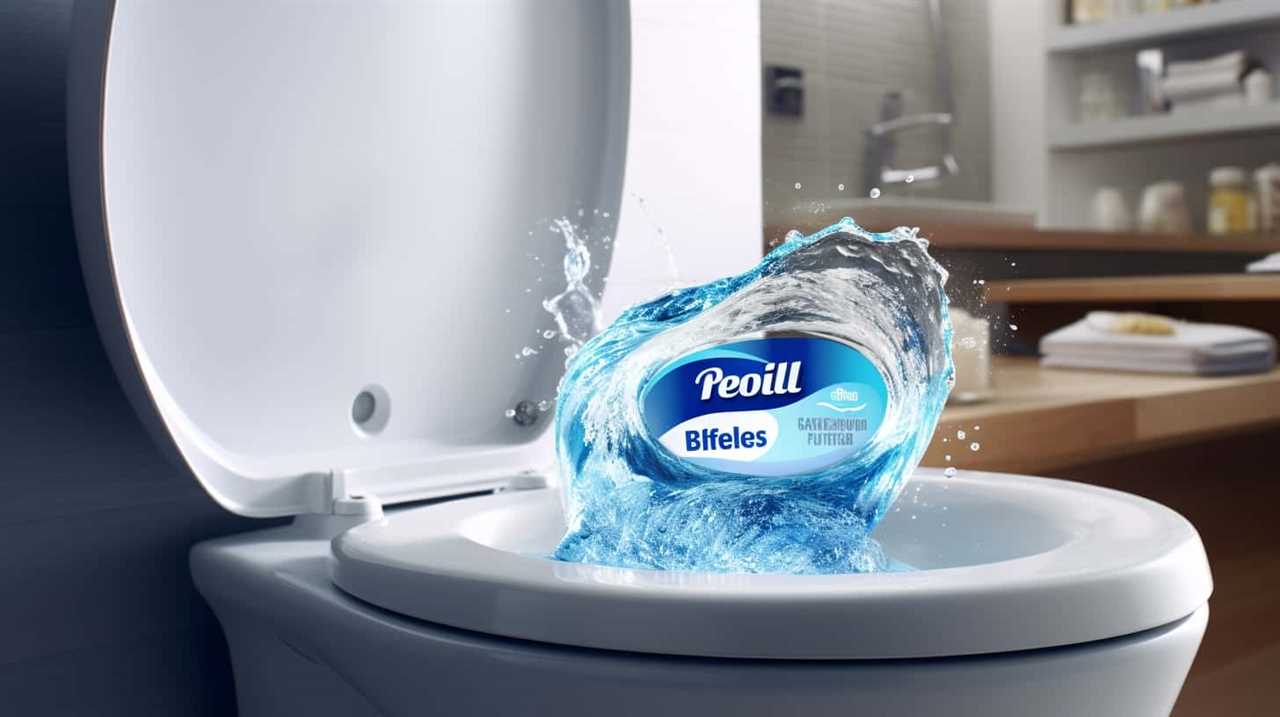
Firstly, it’s crucial to understand the importance of regular toilet bowl maintenance. Neglecting maintenance can lead to the accumulation of dirt, grime, and even mineral deposits, which can affect the toilet’s functionality and appearance.
Additionally, pouring excessive amounts of water into the toilet bowl can have an adverse environmental impact. Water is a precious resource, and wasting it unnecessarily not only increases your water bill but also contributes to water scarcity. Therefore, it’s recommended to only pour the necessary amount of water to effectively flush the toilet.
Tips and Precautions for Using Water to Flush a Toilet
To ensure an effective and efficient flush, it’s important to follow these tips and take necessary precautions when using water to flush a toilet.
- Use enough water: Ensure that you pour enough water into the toilet bowl to create a strong and forceful flush. Aim for a substantial amount of water to generate the necessary pressure for a successful flush.
- Avoid overfilling: While it’s crucial to use enough water, be mindful not to overfill the toilet bowl. Overfilling can cause water to spill onto the floor, leading to potential damage and inconvenience.
- Be cautious with hot water: While hot water can help dissolve waste more effectively, be cautious not to use water that’s too hot. Extremely hot water can crack the porcelain of the toilet bowl, resulting in costly repairs.
Using water to flush a toilet has its pros and cons. It can be a useful alternative when there’s no running water or in emergency situations. However, it may not always provide the same level of force as a regular flush, potentially leading to incomplete waste removal.
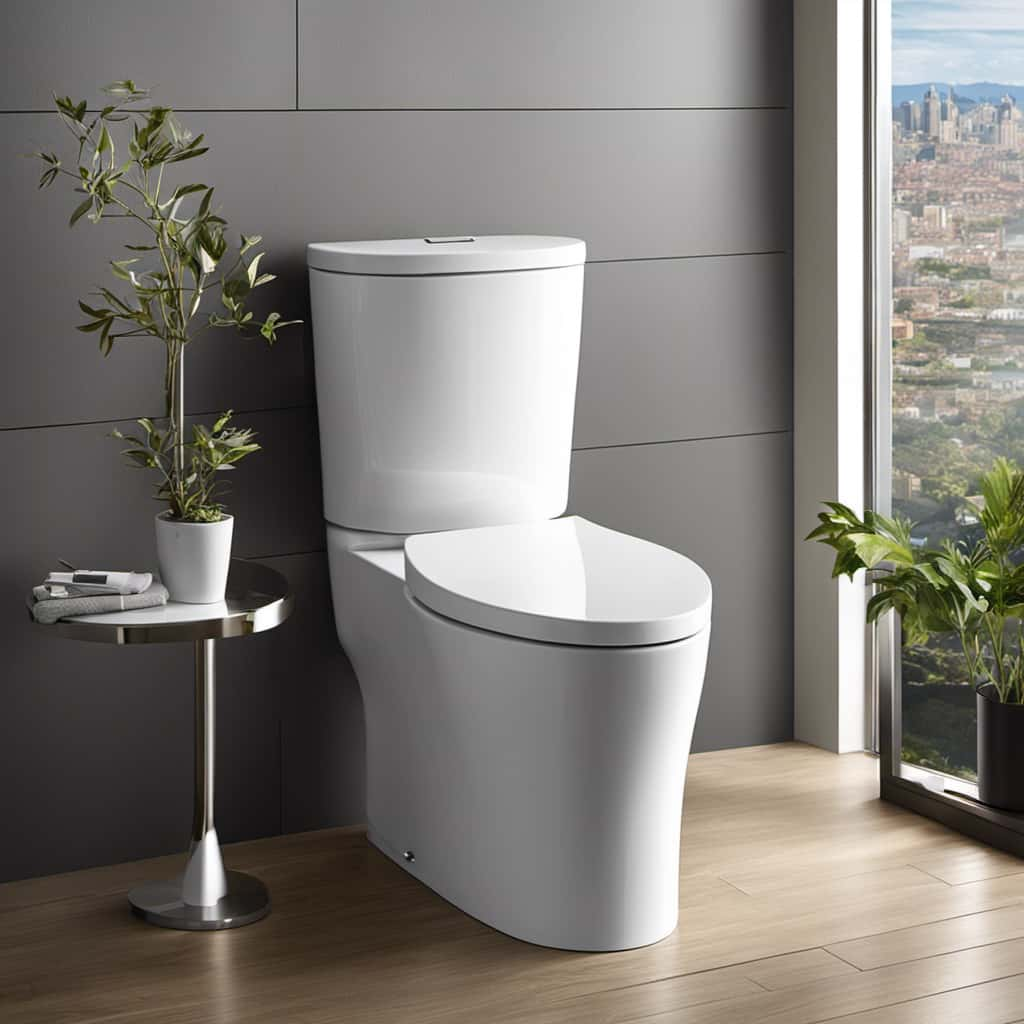
Frequently Asked Questions
How Does the Flushing Mechanism of a Toilet Work?
To fix a toilet that won’t flush, check the flushing mechanism. It works by using water pressure to force waste down the drain. Regular maintenance, like cleaning and replacing parts, will keep it functioning properly.
What Is the Importance of Water in the Flushing Process?
Water is crucial in the flushing process, as it creates the necessary pressure to remove waste. It also helps maintain a clean and sanitary environment. While water-saving mechanisms can be effective, traditional ones remain more efficient.
Are There Any Other Methods to Flush a Toilet Besides Using Water?
Yes, there are alternative flushing methods to using water. While pouring water in the toilet bowl can work, other methods like using a bucket or a vacuum system have their own pros and cons.
What Factors Should Be Considered Before Pouring Water Into the Toilet Bowl?
Factors and considerations should be taken into account when pouring water into the toilet bowl to flush. It is important to assess the water quantity, pressure, and other potential impacts on the plumbing system.

Are There Any Tips or Precautions to Keep in Mind When Using Water to Flush a Toilet?
Toilet bowl flushing tips: Ensure the water level is not too high before pouring water. Slowly pour water from a bucket or pitcher into the bowl. Use caution to prevent splashing or overflow.
Conclusion
In the realm of toilet flushing, water reigns supreme as the primary catalyst. Its role in creating the necessary force to remove waste can’t be understated.
While pouring water into the toilet bowl may provide a temporary solution, it’s important to consider the potential drawbacks and limitations. Factors such as water availability, plumbing infrastructure, and environmental impact should be considered before resorting to this method.
Remember, proper maintenance and understanding of the toilet’s mechanics are key to ensuring a smooth and efficient flushing experience.
